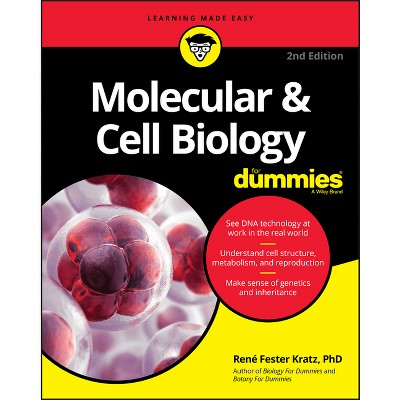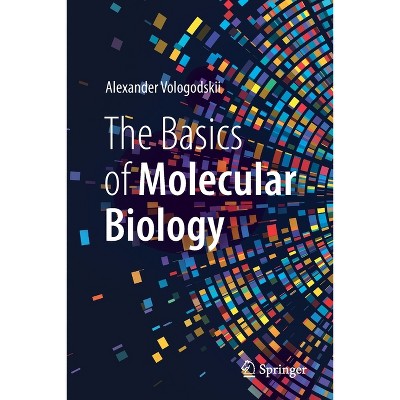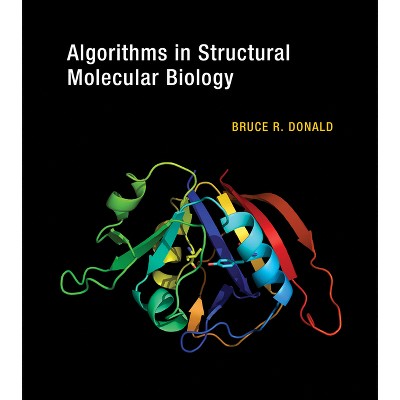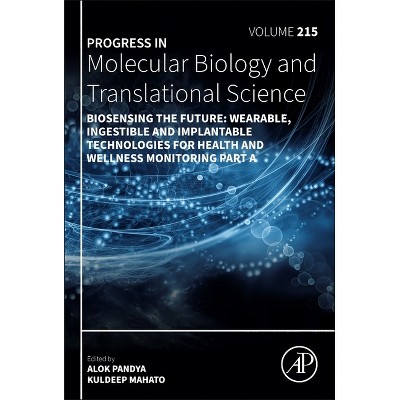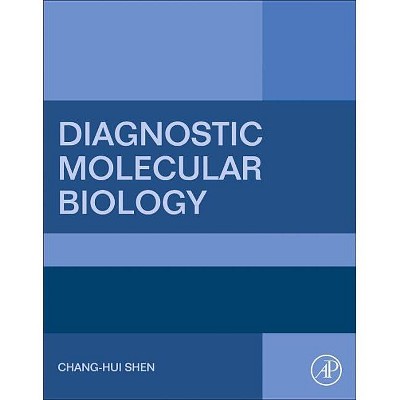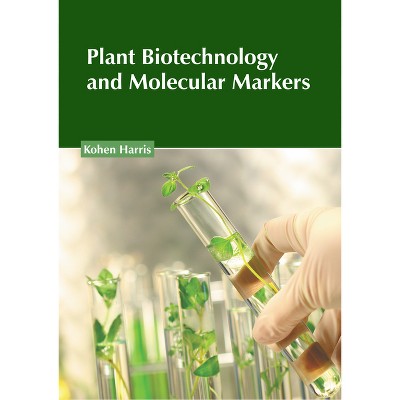Sponsored

Molecular Biology and Biotechnology of Extremophiles - by R a Herbert & R J Sharp (Hardcover)
$99.00
In Stock
Eligible for registries and wish lists
Sponsored
About this item
Highlights
- 1 Biochemistry and molecular biology of the extremely thermophilic archaeobacteria.
- Author(s): R a Herbert & R J Sharp
- 344 Pages
- Science, Life Sciences
Description
Book Synopsis
1 Biochemistry and molecular biology of the extremely thermophilic archaeobacteria.- 1.1 Introduction.- 1.2 Archaeobacterial phylogeny.- 1.3 Ecology of the thermophilic Archaea.- 1.3.1 Morphology of the Archaea.- 1.3.2 Physiology and biochemistry of the Archea.- 1.3.3 Enzymes.- 1.3.4 Structural macromolecules.- 1.3.5 Lipids and lipid biosynthesis.- 1.3.6 Molecular genetics of the extremely thermophilic Archaea.- References.- 2 The molecular genetics and biotechnological application of enzymes from extremely thermophilic eubacteria.- 2.1 Introduction.- 2.2 Aerobic eubacteria.- 2.2.1 The molecular biology and genetics of Thermus.- 2.2.2 Thermus aquaticus DNA polymerase.- 2.2.3 Thermus aquaticus restriction-modification system.- 2.2.4 Expression of other genes from Thermus genomic libraries.- 2.2.5 Proteinases from Thermus spp.- 2.2.6 Genetic transfer and plasmids in Thermus.- 2.2.7 A repetitive sequence in Thermus thermophilus.- 2.2.8 Promoter regions and other control sequences in Thermus.- 2.2.9 Genes and proteins from thermophilic strains of Bacillus.- 2.2.10 ?-Amylases from Bacillus spp.- 2.2.11 Pullulanases and related enzymes from thermophilic bacilli.- 2.2.12 Other genes and genetic systems in Bacillus stearothermophilus.- 2.3 Anaerobic eubacteria.- 2.3.1 Cloning of genes involved in cellulose hydrolysis.- 2.3.2 Hemicellulose hydrolysis.- 2.3.3 Starch hydrolysis.- 2.3.4 Pullulanases.- 2.4 Other enzymes from anaerobic thermophiles.- 2.4.1 Thermotoga.- References.- 3 Biotechnological prospects for halophiles and halotolerant micro-organisms.- 3.1 Introduction.- 3.2 Micro-organisms in the food industry.- 3.2.1 Food spoilage.- 3.2.2 Fermentation products.- 3.2.3 Single-cell protein (SCP).- 3.2.4 Food colouring/flavouring.- 3.3 Production of commercially useful compounds.- 3.3.1 Biological fermentation processes at high salinities.- 3.3.2 Pharmaceutical compounds.- 3,3.3 Polymers.- 3.3.4 Enzymes.- 3.3.5 Compatible solutes.- 3.4 Future aspects.- 3.4.1 Environmental biotechnology.- 3.4.2 Agricultural aspects.- 3.4.3 Fuel from renewable sources.- References.- 4 Acidophilic bacteria: adaptations and applications.- 4.1 Introduction.- 4.2 Constraints on growth at acid pH.- 4.2.1 Chemiosmotic considerations.- 4.2.2 Considerations of the conditions in the periplasm and the implications for its processes.- 4.3 The diversity of the extreme acidophiles.- 4.3.1 Iron-and sulphur-oxidising acidophiles.- 4.3.2 Phylum-and group-specific traits?.- 4.4 The bacterial extraction of metals from mineral sulphides.- 4.4.1 Factors influencing the selection of bacteria for mineral-leaching processes.- 4.5 Molecular genetic studies of acidophiles.- 4.5.1 The development of genetic systems for acidophiles.- 4.5.2 Gene transfer.- 4.6 Concluding comments: diversity, identification and applied molecular biology.- References.- 5 Alkaliphiles: ecology and biotechnological applications.- 5.1 Introduction.- 5.1.1 Ecology and environments.- 5.1.2 Alkaliphile diversity.- 5.1.3 Alkaliphile physiology.- 5.2 Alkaliphiles and industry.- 5.2.1 Enzymes.- 5.2.2 Spirulina.- 5.2.3 Secretion vectors.- 5.2.4 Future trends.- References.- 6 Physiology and biotechnological potential of deep-sea bacteria.- 6.1 Introduction.- 6.2 Deep-sea bacteria.- 6.3 Hydrothermal vents.- 6.3.1 Distribution of vent fields and their main features.- 6.3.2 Chemical features of hydrothermal fluids and expected metabolisms.- 6.3.3 Abundance and activity of bacteria in sea water.- 6.3.4 Bacterial communities on inert surfaces and bacterial mats.- 6.4.5 Main features of mesophilic bacteria isolated from sea water and surfaces.- 6.3.6 Invertebrate-associated bacteria.- 6.4 Biotechnology of deep-sea bacteria.- References.- 7 Physiology and molecular biology of psychrophilic micro-organisms.- 7.1 What are psychrophiles and psychrotrophs?.- 7.2 Microbial types of psychrophiles.- 7.3 Ecology of psychrophiles and psychrotrophs.- 7.3.1 Food.- 7.3.2 Terrestrial and aquatic ecosystems.- 7.4 Molecular mech...Review Quotes
Aims to provide a compresensive review of the current understanding of the meachanisms that extremophiles hav evolved to survive and grow in particular extreme environments, and how these may be exploited for biotechnological processes. - British Book News; This is essential reading for anyone working with these unusual and at times exasperating organisms...This is an excellent book which should find favour with experienced research workers, post-graduates, undergraduates and those of us who teach in these areas. Society for General Microbiology Quarterly
Dimensions (Overall): 9.0 Inches (H) x 6.0 Inches (W) x .94 Inches (D)
Weight: 1.49 Pounds
Suggested Age: 22 Years and Up
Number of Pages: 344
Genre: Science
Sub-Genre: Life Sciences
Publisher: Blackie Academic and Professional
Theme: Evolution
Format: Hardcover
Author: R a Herbert & R J Sharp
Language: English
Street Date: December 31, 1991
TCIN: 1005679253
UPC: 9780216931534
Item Number (DPCI): 247-15-1411
Origin: Made in the USA or Imported
If the item details aren’t accurate or complete, we want to know about it.
Shipping details
Estimated ship dimensions: 0.94 inches length x 6 inches width x 9 inches height
Estimated ship weight: 1.49 pounds
We regret that this item cannot be shipped to PO Boxes.
This item cannot be shipped to the following locations: American Samoa (see also separate entry under AS), Guam (see also separate entry under GU), Northern Mariana Islands, Puerto Rico (see also separate entry under PR), United States Minor Outlying Islands, Virgin Islands, U.S., APO/FPO
Return details
This item can be returned to any Target store or Target.com.
This item must be returned within 90 days of the date it was purchased in store, shipped, delivered by a Shipt shopper, or made ready for pickup.
See the return policy for complete information.
Frequently bought together
Trending Non-Fiction


$18.28
was $19.58 New lower price
4.7 out of 5 stars with 17 ratings











